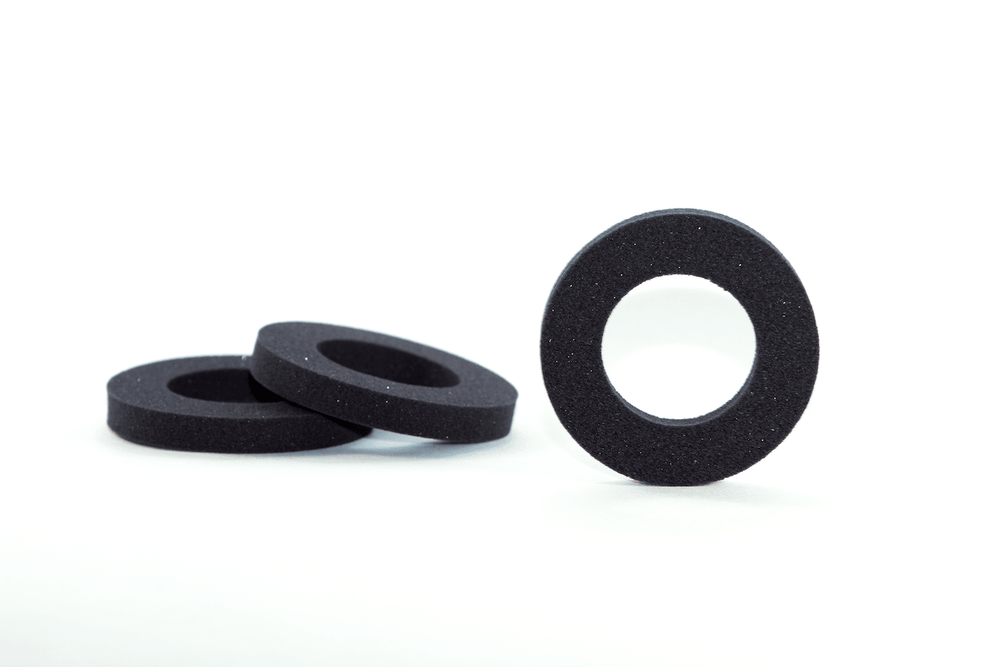
Top 5 Factors to Consider When Choosing Custom Gasket Materials
When deciding on a custom gasket for your product, there are a number of factors that must be examined before placing an order. Any misstep in the design and consideration process, no matter how small, can result in severe problems and even system failures down the line.
To ensure a proper seal that stands up to any condition, a technical review of your chosen material is critical before making the final selection.
Below, we’ll dive into five key considerations for your custom gasket materials, and why they matter.
5 Variables to Consider Before Choosing a Gasket Material
Choosing a gasket material boils down to considering how the gasket will be used and the conditions it needs to stand up to.
1. Temperature
Temperature is one of the most important factors to consider when deciding on a custom gasket. There are two main areas to focus on.
- Internal and external temperatures: This includes things like the weather and any outdoor temperature extremes, but also the internal temperature and makeup of the device itself. That includes not only outdoor conditions, but also what the gasket is containing or protecting inside the system.
- Heat resistance rating: Let your temperature findings help you narrow your selection of gasket material for the application. Certain materials have a limited temperature range, or only excel on the high or low end of the temperature spectrum. Knowing the overall heat resistance of the gasket material is crucial.
Which gasket materials are the most heat resistant?
For high-temperature applications, silicone rubber is often a top choice due to its ability to withstand continuous exposure up to 450°F (232°C).
For lower-temperature or more cost-sensitive applications, EPDM and neoprene are reliable options with excellent resistance down to -40°F (-40°C).
2. Environment
Factoring in environmental stressors does include temperature, but there are more noteworthy variables than just heat and cold. Some of the most important to be aware of are:
- Chemical resistance: Think about the fluids that the gasket will be holding in. Are they corrosive or toxic? Are there any external chemical risks? These factors can drastically impact the longevity of the gasket.
- UV: Consistent exposure to UV rays can quickly compromise a gasket.
- Moisture: Moisture from either internal or external sources can cause some gasket materials to corrode and deteriorate.
- Function: Will the gasket be static throughout its lifetime? Or will it be exposed to movement and/or vibration?
Materials like EPDM are ideal in outdoor environments because of their excellent resistance to ozone, UV exposure and water absorption.
In contrast, neoprene offers moderate chemical and oil resistance, making it useful in industrial and automotive settings.
For further reading: EPDM vs Neoprene: Which synthetic rubber is best for your gasket?
3. Compression set
Compression set refers to a gasket’s ability to return to form after being exposed to a high compressional force. This is a crucial variable because, over time, gaskets that are exposed to force and have a minimal ability to return to form (otherwise referred to as a high compression set) can result in gaps or leaks.
If your gasket will be exposed to compressional force, considering gasket materials that can easily return to form (or, those with a low compression set) is an important variable to reduce the possibility of operational failure.
Materials like PORON® polyurethane are known for their low compression set, making them ideal for long-term sealing in dynamic applications.
4. Durometer
Simply put, the durometer reading is used to determine the hardness or softness of a given gasket.
While softer materials tend to have a higher compression set, it’s important to note that compression set and durometer are distinct properties. Two materials with the same durometer can perform very differently depending on their formulation.
The durometer scale is referred to as a “shore” number, and ranges on a scale from 0-100. Softer gasket materials will register closer to “0”, while harder materials will register closer to “100”.
It is important to pick a gasket material that is soft enough to adequately create a seal between two joints, yet hard enough to be minimally affected by compressional force.
For example, softer gaskets like BISCO silicone foam (30–40 Shore A) provide easy conformability for irregular surfaces, while denser materials like solid rubber (70–90 Shore A) hold up better in high-pressure applications.
5. Industry and product standards
No matter what industry you are working in — be it automotive, aerospace, military, pharmaceutical or otherwise — there are standards and requirements for the material of your gasket. Making sure you decide on a gasket that adequately fits your project needs, while also remaining in compliance with your industry, can be a tricky process.
Depending on your industry, you may need materials that meet UL 94 flame ratings or RoHS directives.
Let us help you build a better gasket
Let the experts at SRP help you select the right gasket material. Whether you need high-temperature performance, chemical resistance, or long-term durability, we’ll help you make the best call.
Got a project in mind? Download your specifications in our online form and we’ll get you a fast, accurate quote.
